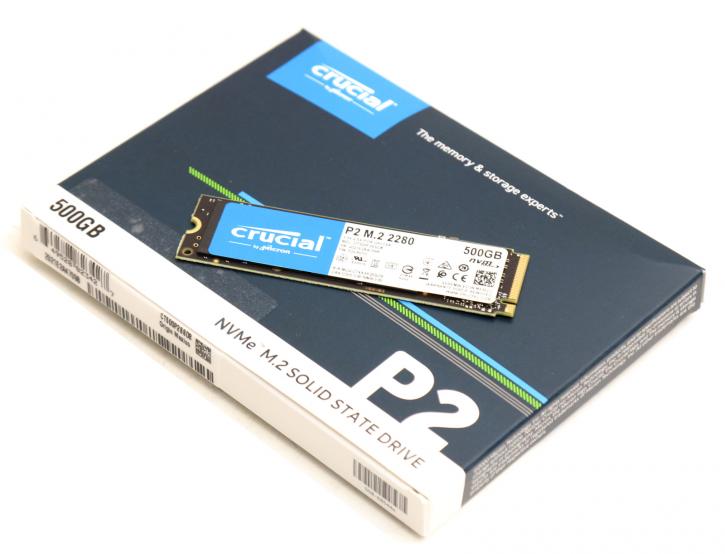Final Words & Conclusion
Final Words & Conclusion
If you are in the market for a SATA3 SSD and seek something in that budget, then if you have a free M2 slot, this product could make sense. However, for an M2 NVMe SSD, we have not been very impressed with the P2 as the write performance is a little incoherent. Sure, at it's worst you're still writing at SATA3 performance levels, but at 13 Cents per GB, there are similar prices NVMe SSDs out there that perform much better. The challenge here is that Crucial opted to go for a DRAM-less design, that means you trade in a chunk of NAND that then is made an SLC cache. The problem with a smaller volume sized is these SLC caches can't be huge either. So if an SSD is typically listed at 512GB, and you see 500 GB on the box, that means 12 GB is provisioned as SLC cache. And that's 6 GB for the 250GB SKU. The P2, unfortunately, runs out of buffer quite fast, ergo if you pass that 12 or 6 GB the write performance drops towards TLC write performance, often referred to by yours truly as the dreaded TLC write hole. For regular PC usage, gaming, and mass (cold) storage like your movies library, we have very little to complain about really, as the read performance is good.
Endurance then, we need to talk about it. Both the 250 GB and 500GB models have been rated at 150 TBW. And that TBW value is a massive trust factor. What does a TBW value tell you? Well, this: how much can this SSD write before NAND cells are starting to die off. If we focus on the submitted and reviewed 500GB version, with its rated 150 TBW you would need to completely write the SSD 300 times before the NAND cells start to die. Let's normalize that to a bit more right proportions if you write 25 GB per day each day of the year x 365 / 1000 = 9.125 TB written per year. So in that scenario that's 16 years of lifespan. These are the numbers we're talking about. So in terms of lifespan and endurance, for a regular PC gamer/users I would not be worried too much, then again for a TLC drive, I find these values a little low.
Concluding
As an NVMe SSD the P2 is okay at best, I mean if you look back and forth from SATA3 SSDs your writes will be roughly the same, the reads are nice and fast, but other then that it's nothing special. If we look at endurance I would have hoped to have had a bit more leeway, then again write 25 GB each day of the year and it would still last you 16 years. Crucial does offer a nice 5-year warranty though, whichever comes first btw, that 5-years or the 150 Terrabytes are written. The bigger issue for the P2 however is the price-based competition. You can purchase mighty fast NVMe SSDs like Sabrent's Rocket series for exactly the same amount of money. I can name many other brands as well here that offer faster perf with higher TBW values. So in that respect, the P2 is going to be a hard sell for Crucial. Then again, with Crucial you buy a reputable Micron based product, which helps in that trust factor. Also, we feel that a 1TB version of this SSD is warranted. The current standard for PC users is 500GB, and we're already seeing people flee and on the lookout for affordable 1 TB SSDs. At 13 cents per GB, for the 500GB model, this SSD perhaps is still a notch too high in price for a real recommendation. Once prices drop to 10 cents per GB, that's where it would make more sense.
Recommended Downloads


